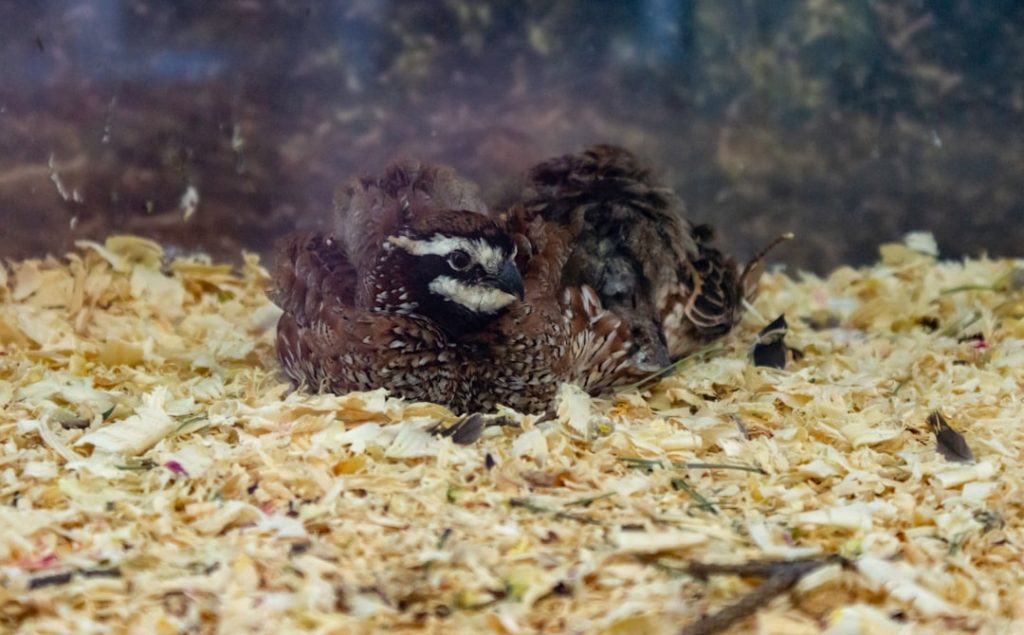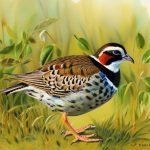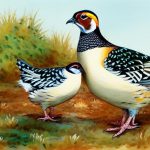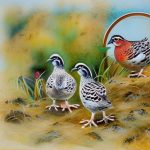Bobwhite quail breeding cages play a crucial role in the successful breeding and rearing of these popular game birds. Breeding cages provide a controlled environment where quails can mate, lay eggs, and raise their young in a safe and secure manner. By using breeding cages, quail breeders can closely monitor the breeding behavior of their birds, ensure proper nutrition and water intake, and maintain a clean and hygienic environment to prevent the spread of diseases. Additionally, breeding cages allow breeders to selectively breed their quails for desirable traits such as size, color, and temperament, leading to the production of high-quality birds for hunting preserves, release sites, or personal enjoyment.
Breeding cages also play a vital role in conservation efforts for bobwhite quail. As the population of wild quail continues to decline due to habitat loss and other environmental factors, captive breeding programs have become increasingly important for preserving the genetic diversity of these birds. By using breeding cages, conservationists can carefully manage the breeding of quails to maintain healthy populations and potentially reintroduce them into suitable habitats. Overall, bobwhite quail breeding cages are essential tools for both commercial breeders and conservationists in ensuring the continued success and survival of these iconic game birds.
Table of Contents
- 1 Selecting the Right Cage for Bobwhite Quail Breeding
- 2 Setting Up the Ideal Environment for Bobwhite Quail Breeding
- 3 Maintaining Cleanliness and Hygiene in Bobwhite Quail Breeding Cages
- 4 Monitoring and Managing Breeding Behavior in Bobwhite Quail Cages
- 5 Providing Proper Nutrition and Water for Bobwhite Quail Breeding
- 6 Ensuring the Health and Safety of Bobwhite Quail in Breeding Cages
- 7 FAQs
- 7.1 What are bobwhite quail breeding cages?
- 7.2 What are the key features of bobwhite quail breeding cages?
- 7.3 How are bobwhite quail breeding cages used?
- 7.4 What are the benefits of using bobwhite quail breeding cages?
- 7.5 Are there any regulations or guidelines for using bobwhite quail breeding cages?
Key Takeaways
- Bobwhite quail breeding cages are important for maintaining a controlled environment for breeding and raising healthy quail.
- When selecting a cage for bobwhite quail breeding, consider factors such as size, material, and ease of cleaning to ensure the well-being of the quail.
- Setting up the ideal environment for bobwhite quail breeding involves providing proper lighting, temperature, and nesting materials for the quail to thrive.
- Maintaining cleanliness and hygiene in bobwhite quail breeding cages is crucial for preventing the spread of diseases and ensuring the health of the quail.
- Monitoring and managing breeding behavior in bobwhite quail cages is essential for successful breeding and raising of healthy quail.
Selecting the Right Cage for Bobwhite Quail Breeding
When it comes to selecting the right cage for bobwhite quail breeding, there are several important factors to consider. The size of the cage is crucial, as it should provide enough space for the quails to move around comfortably and engage in natural behaviors such as dust bathing and foraging. A good rule of thumb is to allow at least 1 square foot of space per bird to ensure they have ample room to thrive. Additionally, the cage should be constructed of durable materials such as wire mesh or plastic to withstand the wear and tear of daily use.
The design of the cage is also important, as it should include features that cater to the specific needs of bobwhite quails. This may include perches for roosting, nesting boxes for egg-laying, and easy access points for feeding and watering. The cage should also be easy to clean and maintain to ensure the health and well-being of the birds. Finally, it’s essential to consider the climate and environmental conditions in which the cage will be located, as this will influence factors such as ventilation, insulation, and protection from predators. By carefully selecting the right cage for bobwhite quail breeding, breeders can create a conducive environment for successful breeding and rearing of healthy quails.
Setting Up the Ideal Environment for Bobwhite Quail Breeding
Creating the ideal environment for bobwhite quail breeding is essential for the health and well-being of the birds. The breeding area should be located in a quiet and secluded spot away from high traffic areas to minimize stress on the birds. It’s important to provide a natural photoperiod by exposing the birds to natural light cycles or using artificial lighting to simulate daylight hours, which can help regulate their reproductive behavior and egg production.
The substrate in the breeding cages should mimic the natural environment of bobwhite quails, with options such as sand, straw, or wood shavings that allow for dust bathing and nest building. Providing suitable nesting materials such as grass clippings or shredded paper can encourage the birds to lay eggs in designated nesting boxes, which helps protect the eggs from damage and predation. Additionally, it’s important to maintain a comfortable temperature and humidity level within the breeding area to ensure optimal breeding conditions for the quails. By setting up the ideal environment for bobwhite quail breeding, breeders can promote natural behaviors and reproductive success in their birds.
Maintaining Cleanliness and Hygiene in Bobwhite Quail Breeding Cages
Maintaining cleanliness and hygiene in bobwhite quail breeding cages is essential for preventing the spread of diseases and ensuring the overall health of the birds. Regular cleaning and disinfection of the cages, nesting boxes, feeders, and waterers are crucial to remove any accumulated waste, debris, or bacteria that could pose a health risk to the quails. Using safe and effective cleaning agents such as mild detergents or veterinary-approved disinfectants can help eliminate pathogens while minimizing any potential harm to the birds.
In addition to regular cleaning, it’s important to practice good biosecurity measures to prevent the introduction and spread of diseases within the breeding facility. This may include limiting access to the breeding area, quarantining new birds before introducing them to existing flocks, and implementing strict hygiene protocols for staff and visitors. By maintaining cleanliness and hygiene in bobwhite quail breeding cages, breeders can create a safe and healthy environment for their birds to thrive and reproduce successfully.
Monitoring and Managing Breeding Behavior in Bobwhite Quail Cages
Monitoring and managing breeding behavior in bobwhite quail cages is essential for maximizing reproductive success and ensuring the well-being of the birds. Observing the behavior of the quails can provide valuable insights into their reproductive readiness, pair bonding, egg-laying patterns, and overall health. By closely monitoring their behavior, breeders can identify any potential issues or challenges that may arise during the breeding process and take proactive measures to address them.
Managing breeding behavior also involves providing suitable nesting sites, materials, and environmental conditions that encourage natural reproductive behaviors in the quails. This may include offering nesting boxes filled with appropriate bedding materials, maintaining optimal temperature and humidity levels, and minimizing disturbances in the breeding area. Additionally, managing breeding behavior may involve separating incompatible pairs or providing supplemental lighting to stimulate reproductive activity during certain times of the year. By actively monitoring and managing breeding behavior in bobwhite quail cages, breeders can optimize their breeding programs and promote successful reproduction in their birds.
Providing Proper Nutrition and Water for Bobwhite Quail Breeding
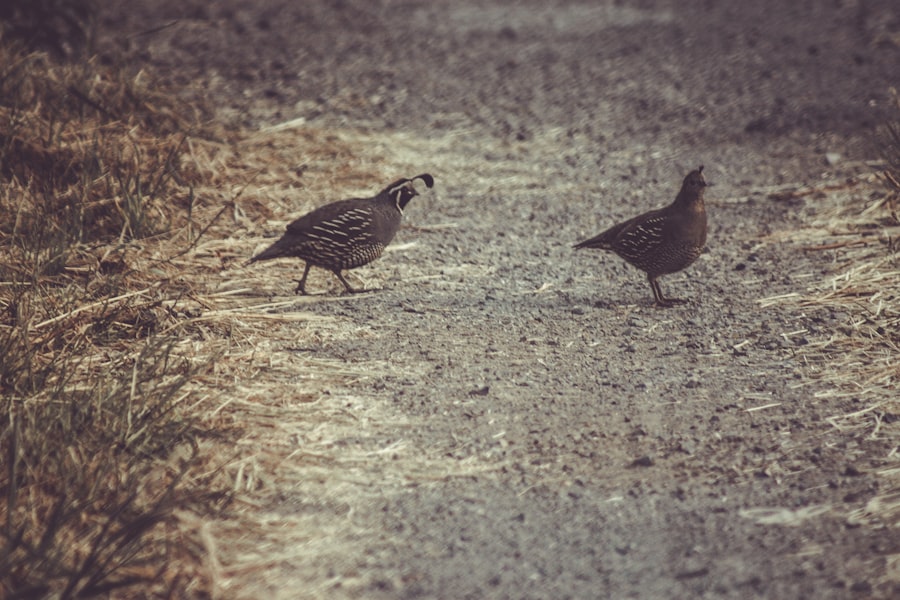
Providing proper nutrition and water is essential for supporting the reproductive health and success of bobwhite quails in breeding cages. A well-balanced diet that meets the nutritional requirements of breeding quails is crucial for promoting egg production, fertility, and overall health. This may include offering a commercial game bird feed formulated specifically for breeding quails, which typically contains higher levels of protein, vitamins, and minerals to support their increased energy demands during the breeding season.
In addition to a quality feed, it’s important to provide access to clean, fresh water at all times to ensure proper hydration for the quails. Water is especially critical during the egg-laying and incubation periods when female quails require adequate hydration to produce healthy eggs. Breeders should regularly check waterers for cleanliness and functionality to prevent dehydration or waterborne illnesses in their birds. By providing proper nutrition and water for bobwhite quail breeding, breeders can support the reproductive success and overall well-being of their birds.
Ensuring the Health and Safety of Bobwhite Quail in Breeding Cages
Ensuring the health and safety of bobwhite quails in breeding cages is paramount for maintaining productive breeding programs and producing healthy offspring. Regular health checks by qualified professionals can help identify any signs of illness or disease early on, allowing for prompt treatment and prevention of potential outbreaks within the flock. Additionally, implementing a vaccination program against common avian diseases can provide an added layer of protection for the quails.
To further ensure their safety, it’s important to minimize stressors within the breeding environment that could compromise the health of the birds. This may include reducing noise levels, limiting disturbances from predators or pests, and providing adequate shelter from extreme weather conditions. Additionally, practicing good biosecurity measures such as controlling access to the breeding facility and regularly sanitizing equipment can help prevent the introduction and spread of diseases among the quails.
By prioritizing the health and safety of bobwhite quails in breeding cages, breeders can create an environment where their birds can thrive, reproduce successfully, and contribute to the conservation efforts aimed at preserving these iconic game birds for future generations.
If you’re interested in bobwhite quail breeding cages, you may also want to explore the article on “The Chicken Coop Country Diner” on PoultryWizard. This article provides valuable insights into creating a comfortable and functional space for your poultry, which can be beneficial when considering the design and layout of your quail breeding cages. Check it out here.
FAQs
What are bobwhite quail breeding cages?
Bobwhite quail breeding cages are specially designed enclosures used to house and breed bobwhite quail for the purpose of producing offspring for conservation, hunting, or research purposes.
What are the key features of bobwhite quail breeding cages?
Bobwhite quail breeding cages typically have wire mesh walls and floors to allow for proper ventilation and waste removal. They also have nesting boxes, perches, and feeding and watering systems to provide a suitable environment for breeding and raising quail.
How are bobwhite quail breeding cages used?
Breeding cages are used to house male and female quail together for the purpose of mating and producing offspring. Once the eggs are laid, they can be collected from the nesting boxes and incubated to hatch the chicks.
What are the benefits of using bobwhite quail breeding cages?
Breeding cages provide a controlled environment for quail breeding, allowing for the production of a consistent and healthy population. They also help protect the quail from predators and provide easy access for monitoring and management.
Are there any regulations or guidelines for using bobwhite quail breeding cages?
Regulations and guidelines for using bobwhite quail breeding cages may vary depending on the location and intended use of the quail. It is important to research and adhere to any relevant laws or recommendations for breeding and housing quail.
Meet Walter, the feathered-friend fanatic of Florida! Nestled in the sunshine state, Walter struts through life with his feathered companions, clucking his way to happiness. With a coop that’s fancier than a five-star hotel, he’s the Don Juan of the chicken world. When he’s not teaching his hens to do the cha-cha, you’ll find him in a heated debate with his prized rooster, Sir Clucks-a-Lot. Walter’s poultry passion is no yolk; he’s the sunny-side-up guy you never knew you needed in your flock of friends!

